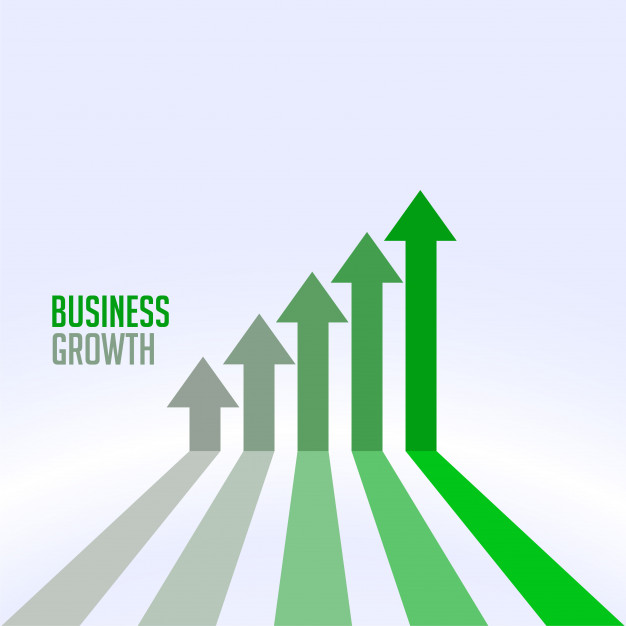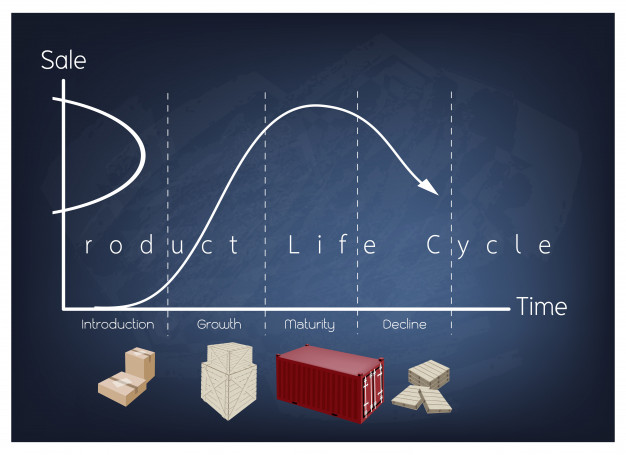As long as there’ve been people running a business, there’ve been other people trying to fit the business into a formula. The product life cycle is one such formula that split the product development process into four phases: introduction, growth, maturity, and decline.
The idea of the model is that you can’t do the same marketing all the way through — with every new phase, your product faces new challenges that require new approaches.
The product life cycle model won’t tell you what exactly will happen with your product and when it will happen, but even so, it’s always good to take a view on the roller-coaster curve ahead.
Better yet, is to bend that curve to our advantage. With that in mind, let’s shed some light on the pivotal points of the product life cycle marketing.
I. is for Intro: Getting business off the ground

When you entering a new market, you have no competitors to fight, but you have a greater enemy — inertia. Newton’s first law states that a motionless object won’t move unless you make your best efforts to make it move.
The point where you get off the ground is your first vital point — 92% of SaaS startups fail during the introduction phase smashed by the inertia.
Inertia fears the light of awareness. You need to make the prospective customers aware of the problem they have, possible solutions, and your brand, that offers the best solution in the universe.
It all boils down to the myth of Prometheus who gives fire to humans. Here’s the pain, here’s why it can’t be healed with available tools, here’s the solution we offer, and here’s the name of the solution.
For instance, to make their wheel rolling, Slack appeared in media as an email killer, Dropbox as a file-sharing killer, and Notion as an app to replace a dozen of your productivity apps.
G. is for Growth: climbing up the curve

According to Eleken’s Growth stage of product life cycle article, when the market validation is achieved, our aim is to reach cruising speed and climb up the curve as high as possible to maximize your market share (read more).
Here’s how the company can strengthen the position during the growth stage:
- Shift marketing efforts from making consumers try the product to making them prefer the product to other brands and competing products.
- Enter new market segments to widen the audience.
- Refer to new distribution channels to build sales up.
- Spend on improving the product and developing new features to make the product outstanding.
The last point is especially beloved by SaaS companies, we even have a specific term for this approach, it’s called product-led growth.
How did the old-good Microsoft sales strategy look like? Account managers reach the enterprise’s C-suite, initiate several rounds (and many months) of negotiations that ended up with purchasing contracts.
And now recall a phenomenon of Slack that entered enterprises through the back door. Once one employee heard about Slack from his friend, started using it with his team and voila, the whole company is on Slack, and no one had an idea of how it worked before. No C-suite calls, no months of negotiations, no account managers.
That’s basically how product-led growth works. You make a product that people enjoy using so much they can’t stop recommending to friends and colleagues. Your magnetic product becomes the main vehicle to acquire, activate, and retain customers.
M. is for Maturity: holding your ground

The stage of maturity is the point where you’ve already climbed high, but your growth tempo starts to slow down — most of the potential customers already have your product (or your competitors’ product), so the customer acquisition is more challenging now.
Fortunately, inertia works both ways. As a product at rest is hard to shake up, a product that already gained momentum tends to stay in motion.
Despite the slowdown, you’re on the top of the curve enjoying the strong cash flow. The problem is that the companies that rest on their laurels have little chance to rest there alone. At this stage, your market attracts new competitors, so you need to focus your marketing efforts on resisting the pressure from competitors attracted by profitable opportunities.
User experience dominates here, user experience and marketing. Maturity marketing is less about Prometheus stories and more about differentiation, confidence, and credibility. You need facts to support your claims, you need case studies and testimonials to show how good it works.
J. is for Jump: innovate or die

The media always search for the next big thing, so certain technologies tend to dominate the headlines for some time. Remember how about a decade ago Kindle was the hottest thing that symbolized the end of physical books?
As time passes, what was young and energetic, starts to look mature and tired, and begins a rapid decline. Today, only about 19% of adults report owning an e-reader.
The vital point here is long before the decline — somewhere in the middle of your maturity, you have an innovation window to throw more logs in and jump into the new product life cycle. Thus, you turn your product life cycle into a product life spiral, like in the picture below.
Unless you keep innovating, something new will come along to offer a feature that you don’t have. E-readers went off the grid replaced by multifunctional smartphones.
We know huge companies like Polaroid, Nokia, and Yahoo that struggle to sustain their performance. But we also have examples of businesses that successfully reinvented themselves. Take Netflix, which managed to jump from collapsing DVDs rent niche into a trendy subscription model.
Wrapping up product life cycle marketing
The important thing to take away is that the product life cycle is not a destiny, and you’re not a victim. It just helps to foresee the upcoming challenges and get ready to control your product curve with the right marketing decisions taken at pivotal points.
The points are in front of you, so the power to shape the curve is in your hands now!




